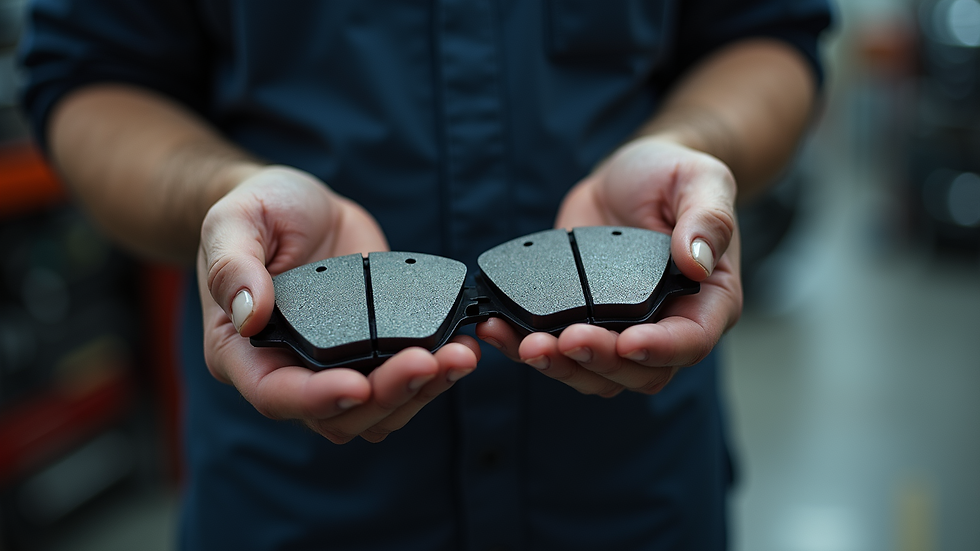Top Methods for Identifying Auto Parts
- levan orjonikidze
- Sep 10
- 4 min read
When working with vehicles, whether repairing, restoring, or upgrading, identifying the correct auto parts is crucial. Using the wrong part can lead to poor performance, safety issues, or even damage to the vehicle. Over the years, I have found that mastering the art of auto parts identification not only saves time but also ensures the job is done right the first time. In this post, I will share some of the most effective methods to identify auto parts accurately, helping you navigate the vast world of automotive components with confidence.
Understanding Auto Parts Identification
Auto parts identification is the process of recognizing and verifying the specific components needed for a vehicle. This task can range from simple visual checks to more technical approaches involving part numbers and manufacturer details. For anyone involved in automotive work, knowing how to identify parts correctly is essential.
One of the first steps I recommend is familiarizing yourself with the vehicle’s make, model, and year. These details significantly narrow down the parts options. For example, a brake rotor for a 2015 sedan will differ from one designed for a 2020 SUV, even if both are from the same manufacturer.
Another practical tip is to use the vehicle’s VIN (Vehicle Identification Number). This unique code provides detailed information about the car’s specifications and can be used to find exact parts. Many online databases and parts catalogs allow you to enter the VIN to pull up compatible components.

How to Use Visual Inspection for Auto Parts Identification
Visual inspection is often the quickest way to identify a part. This method involves examining the part’s shape, size, material, and any markings or labels it may have. Here are some key points to consider during a visual inspection:
Look for part numbers or serial numbers: Many parts have stamped or printed numbers that can be cross-referenced with catalogs.
Check for manufacturer logos or symbols: These can help confirm the brand and authenticity.
Note the condition and wear patterns: This can indicate if the part is original or a replacement.
Compare with known parts: Having a reference part or image can make identification easier.
For example, when identifying a car battery, you can look at the label for voltage, cold cranking amps, and group size. These details ensure you select a battery that fits and performs well.
Visual inspection is especially useful when you have the part physically in hand. However, it can be challenging if the part is dirty, damaged, or missing labels. In such cases, combining this method with other identification techniques is beneficial.
What are identification methods?
Identification methods for auto parts vary widely depending on the complexity of the part and the resources available. Beyond visual inspection, here are some common approaches:
Using OEM (Original Equipment Manufacturer) catalogs: These catalogs list parts by vehicle make and model, often including diagrams and part numbers.
Digital databases and apps: Many platforms allow you to search parts by VIN, part number, or description.
Barcode scanning: Some parts come with barcodes that can be scanned to retrieve detailed information.
Consulting repair manuals: These manuals provide exploded views and part lists that help in identification.
Physical measurements: Measuring dimensions like diameter, length, or thread pitch can help match parts accurately.
Each method has its strengths, and often, a combination of these approaches yields the best results. For instance, I often start with a visual check, then verify the part number using an OEM catalog or an online database.

Leveraging Online Resources for Accurate Identification
In today’s digital age, online resources have become invaluable for auto parts identification. Websites like AllCatalogs offer comprehensive access to OEM and aftermarket parts catalogs for a wide range of car brands. This makes it easier to find the exact part you need without endless searching.
When using online catalogs, here are some tips to maximize their usefulness:
Enter precise vehicle details: Make sure to input the correct make, model, year, and engine type.
Use part numbers when available: This reduces guesswork and ensures compatibility.
Check diagrams and images: Visual aids help confirm the part’s appearance and placement.
Compare OEM and aftermarket options: Sometimes aftermarket parts offer better value or availability.
Read user reviews and notes: These can provide insights into part quality and fitment.
I have found that combining online catalogs with physical inspection and part number verification is the most reliable way to identify parts. Plus, many platforms update their databases regularly, keeping information current.
Practical Tips for Identifying Hard-to-Recognize Parts
Some auto parts are notoriously difficult to identify due to their small size, lack of markings, or similarity to other components. Here are some strategies I use to tackle these challenges:
Use a magnifying glass or microscope: This helps reveal tiny numbers or symbols.
Take clear photos: Zoomed-in images can be shared with experts or posted in forums for advice.
Consult manufacturer support: Contacting the vehicle or part manufacturer can provide definitive answers.
Join automotive communities: Online forums and social media groups are great for crowdsourcing identification.
Use measurement tools: Calipers and gauges can provide precise dimensions to match parts.
For example, identifying a specific sensor or connector often requires checking pin configurations and connector shapes. These details are critical for ensuring electrical compatibility.

Final Thoughts on Auto Parts Identification
Mastering auto parts identification is a skill that improves with practice and the right tools. Whether you rely on visual inspection, digital catalogs, or expert advice, the goal is to ensure you get the right part the first time. This not only saves money but also enhances vehicle safety and performance.
Remember, using reliable sources like AllCatalogs can streamline your search and provide access to a vast array of parts information. By combining these resources with hands-on techniques, you can confidently tackle any parts identification challenge that comes your way.
Happy wrenching and safe driving!





Comments